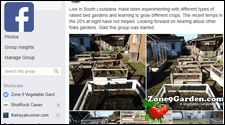As long as plants are doing well, there is an argument for leaving well alone. Overfeeding is counter-productive, because sappy plants cannot support themselves properly, are more prone to frost damage in winter and are more likely to be attacked by pests attracted to their soft, succulent growth.
However, a plant showing deficiency symptoms is in need of help. Symptoms to look out for are yellowing leaves and poor growth, indicating lack of nitrogen. Brownish-purple markings and scorched leaf edges suggest potassium deficiency, especially if they are combined with a reluctance to flower and fruit well. Yellowing between the veins is the classic symptom of magnesium deficiency. Some plants are particularly hungry feeders and common sense should tell us when to intervene with a feed. There is usually most benefit to be had by applying fertilizer at the start of the growing season, or (.luring spring and early summer when most grow this being made.
Sick plants cannot usually make use of fertilizers, because they need healthy root systems to absorb them. Nurse the plant back to health before feeding, otherwise the salts will build tip in the pot or soil and damage a weak root system even further.
The major nutrients (or “macronutrients”) include nitrogen for leafy growth, phosphorus (P) for strong roots, and potassium (K) to encourage flower and fruit production. The big three are always listed in this order on packages and bottles of fertilizer, along with a ratio to indicate the proportions of each. Other macronutrients are magnesium (Mg), calcium ((Ca), and sulfur (S). Micronutrients or trace elements are important too and include iron (Fe), manganese (Mn), copper, zinc (Zn), boron (B), and molybdenum (Mo).
Types of fertilizer
There is a mind-boggling array of fertilizers on the shelves of garden centers, but they fall into just a few basic categories.
Straight fertilizer
A straight fertilizer adds only one compound to the soil. Inorganic sulfate of ammonia supplies only nitrogen, superphosphate is an artificial straight fertilizer supplying only phosphorus (natural rock phosphate would be an alternative for organic gardeners). Inorganic sulfate of potash or (for organic gardeners) rock potash adds only potassium.
Compound fertilizer
These fertilizers are added to the soil at a rate recommended on the package, usually before sowing or planting crops or bedding plants. Organic examples are fish, blood and bone-meal (nitrogen, phosphates, and potash), fish meals (nitrogen), and seaweed meal (nitrogen, potash, and trace-elements). An inorganic example would be Growmore (nitrogen, phosphates, and potash), but there are main other proprietary types aimed at feeding particular types of plants.
Slow-release fertilizer
These complex fertilizers release their nutrients slowly and are usually applied in late winter or early spring to trees, shrubs, and herbaceous perennials in one dose to last a whole season. Some slowly degrade in the soil, while others are encased in a membrane that degrades with moisture and warmth over time. There are various brands of inorganic-fertilizers available that combine nitrogen, phosphates, and potash and are aimed at feeding particular types of plants.
Check out the Organic Waste Fertilizer
Liquid fertilizer
There are plenty of proprietary brands of fertilizer to dilute into water and apply to plants through a watering can or hose. These are of most benefit to plants growing in pots both indoors and out, but can also be applied to plants growing in the ground. Both inorganic and organic examples are available. Many organic gardeners make their own brews by steeping nettles, Russian comfrey, or sheep dung in water and diluting this to feed their plants. Never feed a dry or saturated plant.
Foliar feed
Some liquid fertilizers can also be applied by spraying them onto leaves. Foliar feeds are particularly good for epiphytes (plants with small root systems, whose natural growing habitat is up in the branches of trees) and plants whose toots are feeble.


